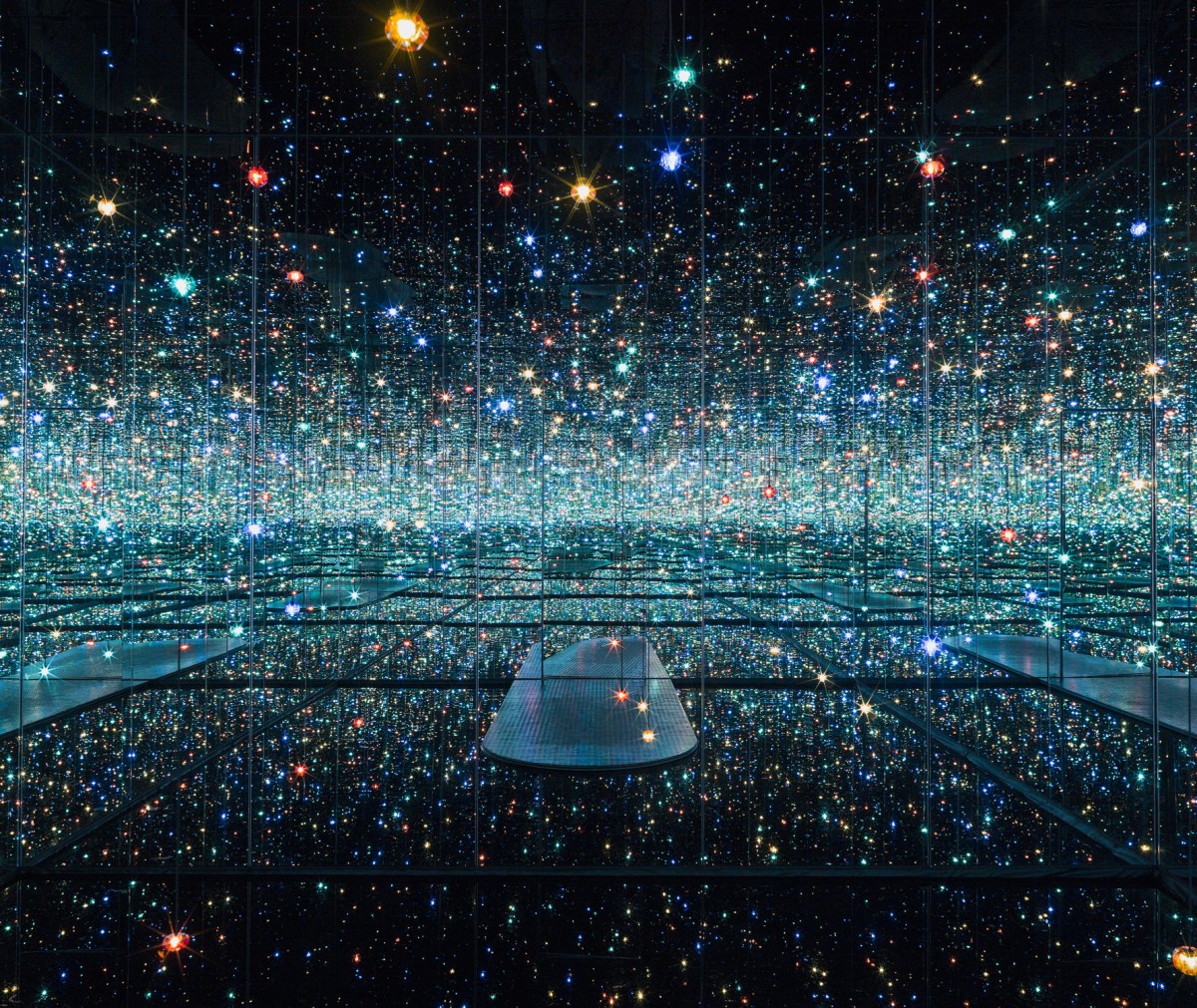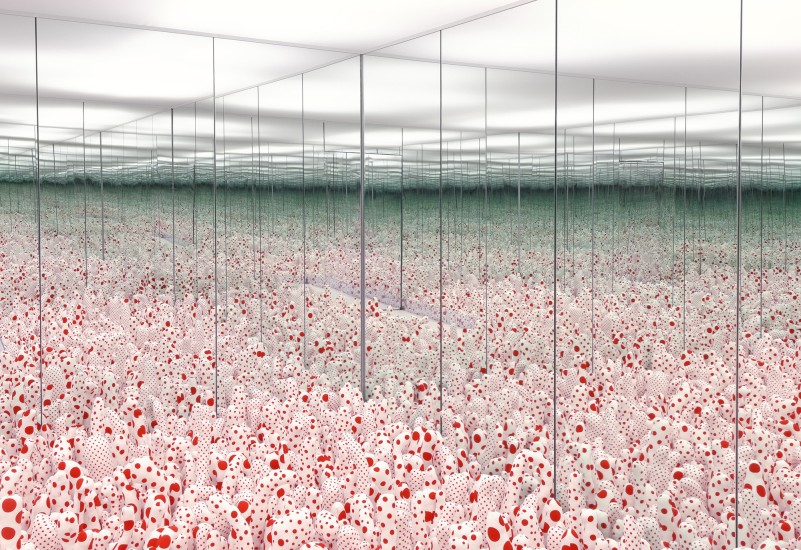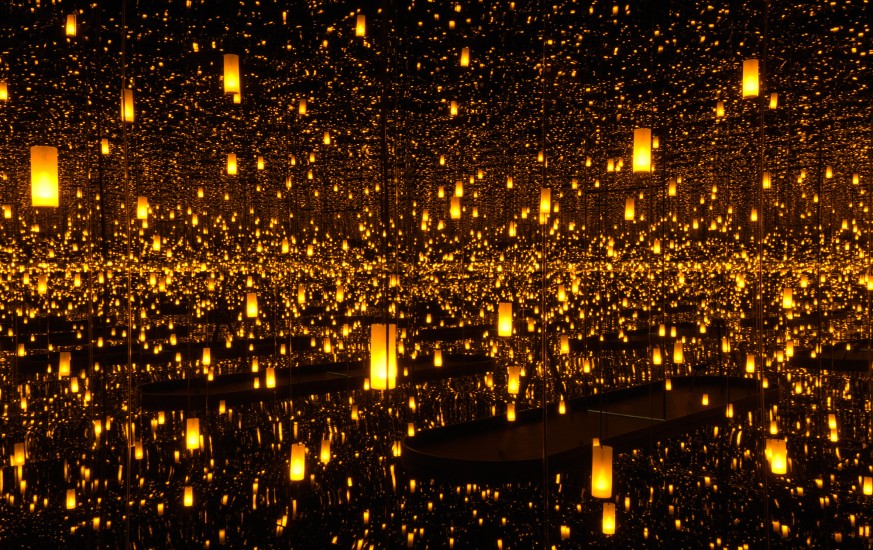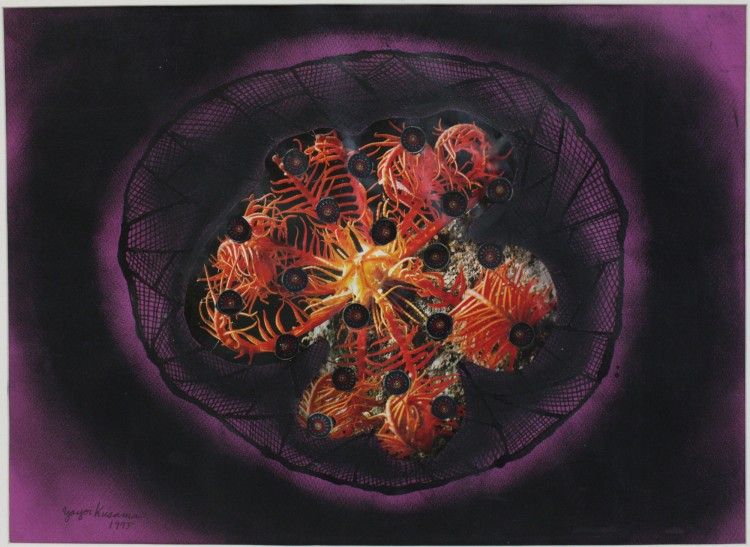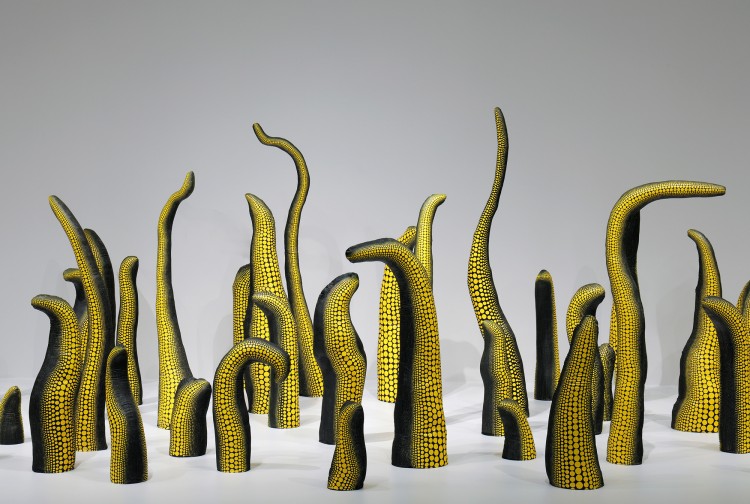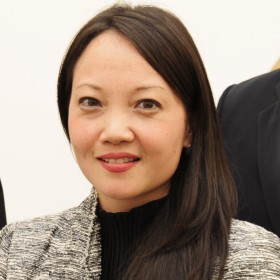EXHIBITION OVERVIEW
Experience infinity: From her immersive infinity rooms to mesmerizing paintings and playful sculptures, Yayoi Kusama welcomes you to participate in her extraordinary and innovative explorations of time and space.
Infinity may be a difficult concept to grasp, but it is easy to contemplate when you step inside one of artist Yayoi Kusama’s iconic Infinity Mirror Rooms in the exhibition Yayoi Kusama: Infinity Mirrors. Rich with key works from the contemporary Japanese artist’s significant 65-year career, this major exhibition also shows the evolution of her immersive, multi-reflective installations, in which she invites you to share in her unique vision.
Immerse yourself in six of these kaleidoscopic environments where you will be endlessly reflected within fantastic landscapes. You’ll also see Kusama’s mesmerizing and intimate drawings, her early Infinity Net paintings in which nets organically expand along the surface of a canvas like cell formations, and her surreal sculptural objects. These key works join more than 90 works on view, including large and vibrant paintings, sculptures, works on paper, as well as rare archival materials.
The 88-year-old artist continues to work at a brisk pace in her Tokyo studio. The exhibition features the North American debut of numerous new works. Her most recent painting series, My Eternal Soul (2009–present), may be the greatest surprise. Exuberant in colour and paired with sculptures that bear titles such as My Adolescence in Bloom, they mark a striking progression in the use of Kusama’s signature symbol of the polka dot. Also on view in North America for the first time is the recently realized Infinity Mirror Room, All the Eternal Love I Have for the Pumpkins, 2016 , a field of yellow, dotted pumpkins spreading into infinity.
In addition to the paintings, sculptures, drawings and environments, viewers will encounter posters, letters, cards, and invitations that relate to Kusama’s early exhibitions and events—including her first solo show, which took place in Seattle—a slideshow of Kusama’s performances as well as an interview with the artist filmed on the occasion of this exhibition.
